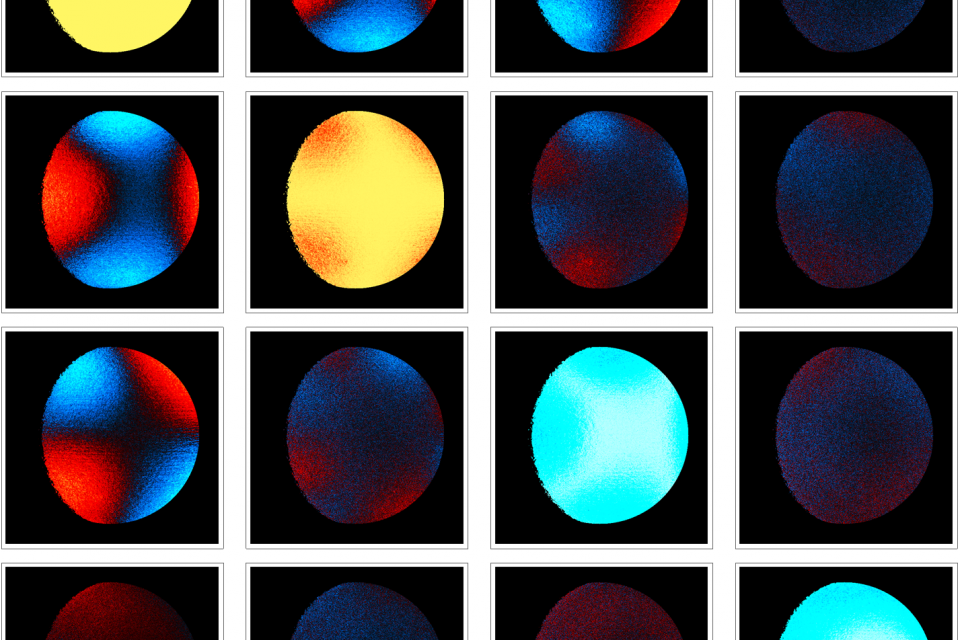Datasets
Standard Dataset
Data for "Efficient Modeling of Depolarizing Mueller BRDFs"
- Citation Author(s):
- Submitted by:
- Quinn Jarecki
- Last updated:
- Mon, 10/30/2023 - 11:53
- DOI:
- 10.21227/3q77-z917
- License:
 150 Views
150 Views- Categories:
- Keywords:
Abstract
Light-matter interactions within indoor environments are significantly depolarizing. Nonetheless, the relatively small polarization attributes are informative. To make use of this information, polarized-BRDF (pBRDF) models for common indoor materials are sought. Fresnel reflection and diffuse partial polarization are popular terms in pBRDF models, but the relative contribution of each is highly material-dependent and changes based on scattering geometry and albedo. An efficient pBRDF would describe these dependencies with as few parameters as possible while retaining physical significance and task-relevant information. This work compares a triply-degenerate (TD)-Mueller matrix (MM) model to measurements of 3D printed objects. In this TD-MM model, the radiometric, polarimetric, and depolarization attributes are decoupled to reduce the number of parameters. The depolarization is quantified by a single geometry-dependent parameter, four geometry-independent material constants describe the polarization properties, and our TD-MM model is normalized to unit radiance so that the BRDF is decoupled. To test an application of the TD-MM model the material constants are assumed and the geometry-dependent depolarization parameter for a red 3D printed sphere is estimated from linear Stokes images. The geometry-averaged error of the depolarization parameter is 4.2% at 662 nm (high albedo) and 11.7% at 451 nm (low albedo). Since the error is inversely proportional to albedo and depolarization, the TD-MM model is referred to as appropriate for depolarization-dominant materials. The robustness of the TD-MM model is also tested by comparing ground-truth Mueller images to extrapolations of a red 3D printed Stanford bunny under arbitrary polarized illumination.
This dataset consists of measurements performed with a Mueller matrix imaging polarimeter (in the folder Mueller_images) and measurements performed with a commercial linear Stokes camera (in the folder Stokes_images).
Within the Mueller_images folder, there is a folder for measurements of the 3D printed Stanford bunny (bunny_mm) and for the 3D printed sphere (sphere_mm). Each of these folders contains a folder with the complete Mueller matrix image data (mm) and the non-depolarizing Mueller-Jones matrix image data which our models seek to represent (m0). Within these folders, the data are organized by wavelength (451) and (662). The acquisition geometry of each measurement appears at the end of each file name. Each Mueller image file should be read in as 32-bit float binary data of length 5760000. Each binary data array is then reshaped to a 600x600x4x4 array to create the 4x4 Mueller matrix over a 600x600 pixel image. These can be read into Python and displayed with the included script.
Within the Stokes_images folder, there is a folder for measurements of the 3D printed Stanford bunny (bunny_stokes) and for the 3D printed sphere (sphere_stokes). Each of these folders constains folders named for their acquisition geometry. Within the folder for each geometry, there are images saved as .tiff files for the data from the Stokes camera. Each image is named wavelength_measurement#_polarizerAngle. Two measurements are performed for each wavelength and polarizer angle to get measurement# 1 and 2.






